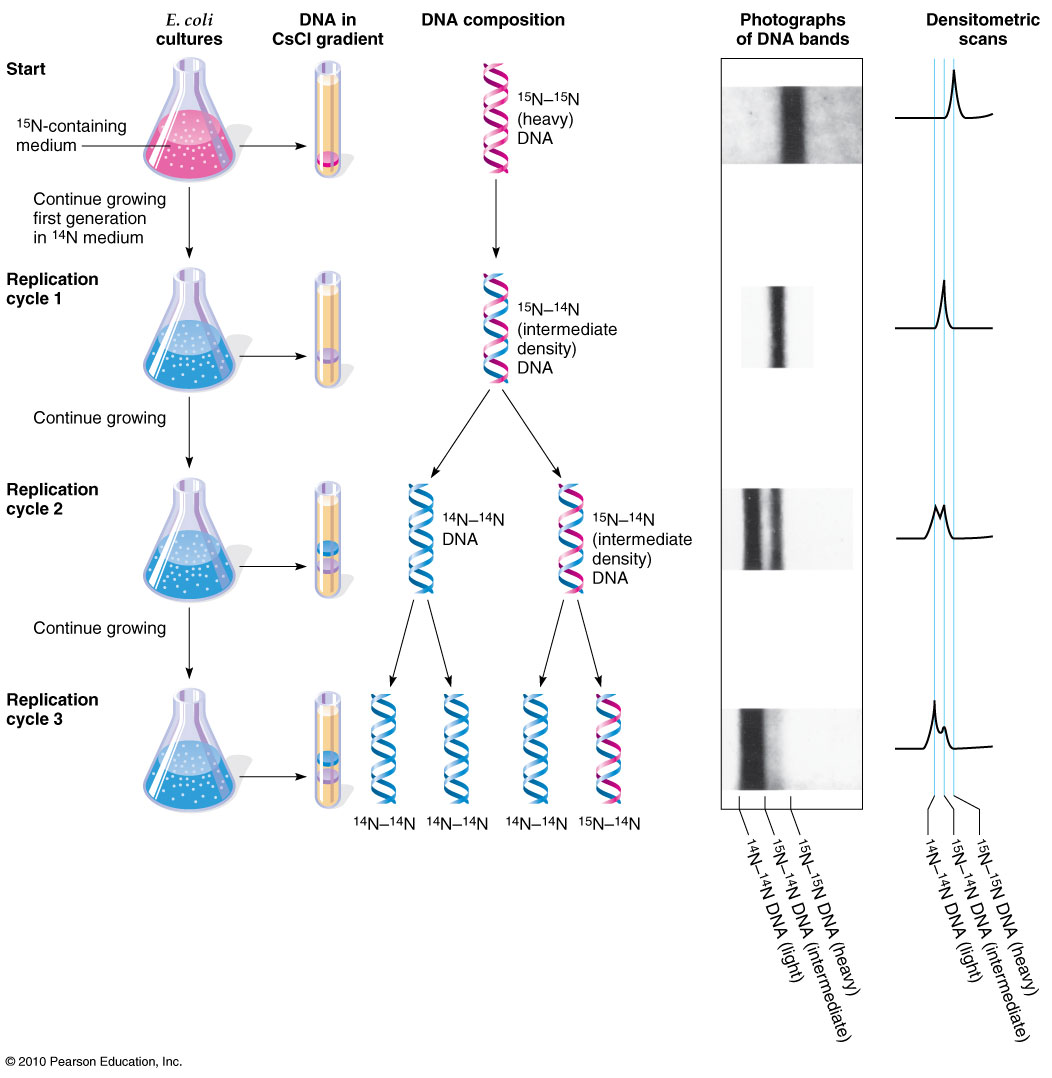Describe the Procedure of the Meselson and Stahl Experiment.
First the Ecoli were grown in the medium containing 15 NH 4 Cl for several generations. The Meselson-Stahl experiment Biochem Mol Biol Educ.
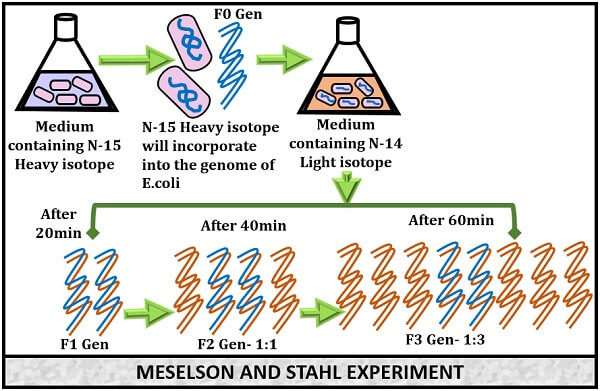
Meselson And Stahl Experiment Definition Steps Conclusion Biology Reader
- Growing the cells for many generations in medium containing 15N and transferring to 14N medium allows for the detection of new DNA.

. The Meselson and Stahl Experiment. 15 N heavy and 14 N normal are two isotopes of nitrogen which can be distinguished based on their densities by centrifugation in Cesium chloride CsCl. The MeselsonStahl experiment is an experiment by Matthew Meselson and Franklin Stahl in 1958 which supported Watson and Cricks hypothesis that DNA replication was semiconservativeIn semiconservative replication when the double stranded DNA helix is replicated each of the two new double-stranded DNA helices consisted of one strand from the.
Start studying Meselson-Stahl Experiment. Describe the procedure of the Meselson and Stahl experiment Meselson and Stahl tested the hypothesis of DNA replication. Who are the experts.
Through this experiment Messelson and Stahl confirmed that DNA replicated semiconservately meaning that each strand in DNA strand will serve as template for other. Google Classroom Facebook Twitter. Meselson and Stahl Experiment In 1958 Matthew Meselson and Franklin Stahl conducted an experiment on Ecoli which divides in 20 minutes to study the replication of DNA.
In molecular biology DNA replication is the primary stage of inheritance. DNA replication and RNA transcription and translation. Semi conservative DNA Replication through Meselson and Stahls Experiment.
Semiconservative replication means that when the double stranded DNA helix was replicated each of the two double stranded DNA helices consisted of one strand coming from the original. They experimented using simple techniques as ultra-centrifugation and density grading. Meselson-Stahl experiment diagram en by Mariana Ruiz Villareal has the original artwork public domain.
They cultured bacteria in a 15N medium. First they grew Ecoli in a medium where the only nitrogen available was ammonium chloride in which the normal 14N isotope is replaced with the heavier 15N isotope. What kind of DNA did Meselson and Stahl separate.
Mode of DNA replication. Meselson and Stahl first used DNA from a specific type of virus that infects bacteria called a. All new DNA made in subsequent cell divisions would be lighter.
15N is a heavy isotope of nitrogen so the DNA synthesized is of heavy density. Heavy nitrogen DNA was more dense so when it was spun in. Experts are tested by.
Author József Szeberényi 1 Affiliation 1 Department of Medical Biology Medical School University of Pécs H-7624 Pécs Hungary. This experiment is one of the best in biologyit was conducted by Matthew meselson and franklin stahlLiterally replication means the process of duplication. Density-gradient centrifugation separates molecules based on their densities which depend on the molecular weights of the molecules.
After two cell divisions the DNA molecule was now either half heavy and half light or entirely light. Learn vocabulary terms and more with flashcards games and other study tools. Describe the procedure of the Meselson and Stahl experiment.
Since the test performed by Meselson and Stahl showed that the amount of the DNA material was equal in two daughter cells yet the density thereof was different the presence of semiconservative properties in DNA. Briefly describe the Meselson and Stahl experiment that indicated that DNA replication is semiconservative. Describe the Meselson and Stahl experiment and outline its significance.
Want to see the full answer. The experiment done by Meselson and Stahl demonstrated that DNA replicated semi-conservatively meaning that each strand in a DNA molecule serves as a template for synthesis of a new complementary strand. Meselson and stahl took the Ecoli cells grown in the presence of heavy nitrogen which were there for label with heavy nitrogen and grew them in the presence of light nitrogen.
- Labeling the pool of nitrogenous bases of the DNA of E. Describe the role of 15N in the Meselson-Stahl experiment. - In 1958 Meselson and Stahl set out to determine the model of DNA replication.
1 Describe the Meselson-Stahl experiment and explain how it showed that DNA replication is semiconservative. In order to concede that the process of DNA replication is semiconservative one should take a closer look at the outcomes of the experiment performed. Meselson and Stahl Experiment Steps.
A key historical experiment that demonstrated the semi-conservative mechanism of DNA replication. FourthThis model assumes that every hybrid DNA molecule will produce two types of molecules in the third generation one of which will be light while the more radical model assumes that every light DNA molecule will only. Meselson and Stahl utilized the common nitrogen by replacing it with a heavier isotope so that they can identify the parent and daughter DNA in solution by mixing the DNAs of different densities.
How would their results have differed if DNA replication was actually conservative in nature. This is an experiment by Matthew Meselson and Franklin Stahl in 1958 which supported the hypothesis that DNA replication was semi conservative. In 1958 Matthew Meselson and Franklin Stahl conducted an experiment on Ecoli which divides in 20 minutes to study the replication of DNA.
Meselson and Stahl performed a series of an experiment which includes the following steps. Epub 2012 Mar 2. Coli were grown in heavy nitrogen 15N This caused all the DNA to incorporate heavy nitrogen into their bases.
If replication was conservative the parental molecule will synthesize a entirely new double stranded molecule after one round of replication one molecule is conserved as two old strands. Coli with the heavy isotope 15N labels allows old DNA to be followed. Amplification is a process in which the the single DNA can be sequenced to get numerous DNA fragment.
Meselson and Stahl used density-gradient centrifugation to separate different molecules in a solution a method they later used to separate DNA molecules in a solution. NH 4 provides the nitrogen as well as a protein source for the growth of the Ecoli. Check out a sample QA here.

Meselson And Stahl Experiment Youtube
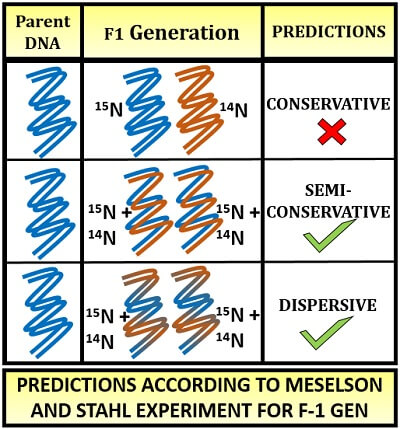
Meselson And Stahl Experiment Definition Steps Conclusion Biology Reader
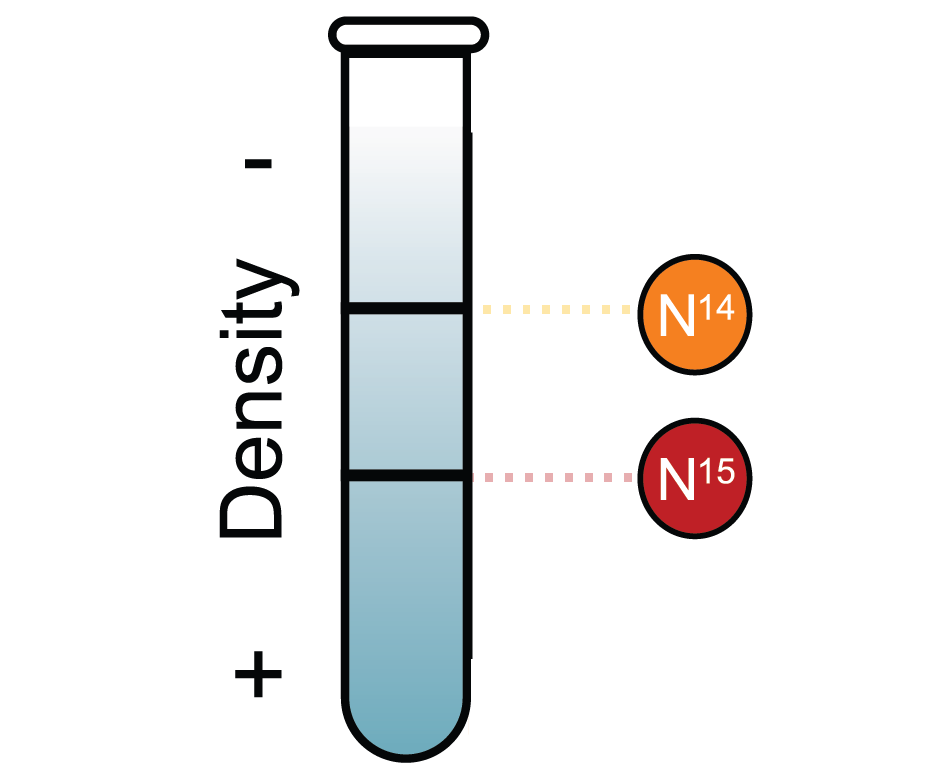
Mode Of Dna Replication Meselson Stahl Experiment Article Khan Academy

Image Purines For Term Side Of Card Biology Science Rules Life Science

The Meselson Stahl Experiment 1957 1958 By Matthew Meselson And Franklin Stahl The Embryo Project Encyclopedia

M Meselson And F Stahl Experiment

Western Blot Westerns Pie Chart Chart
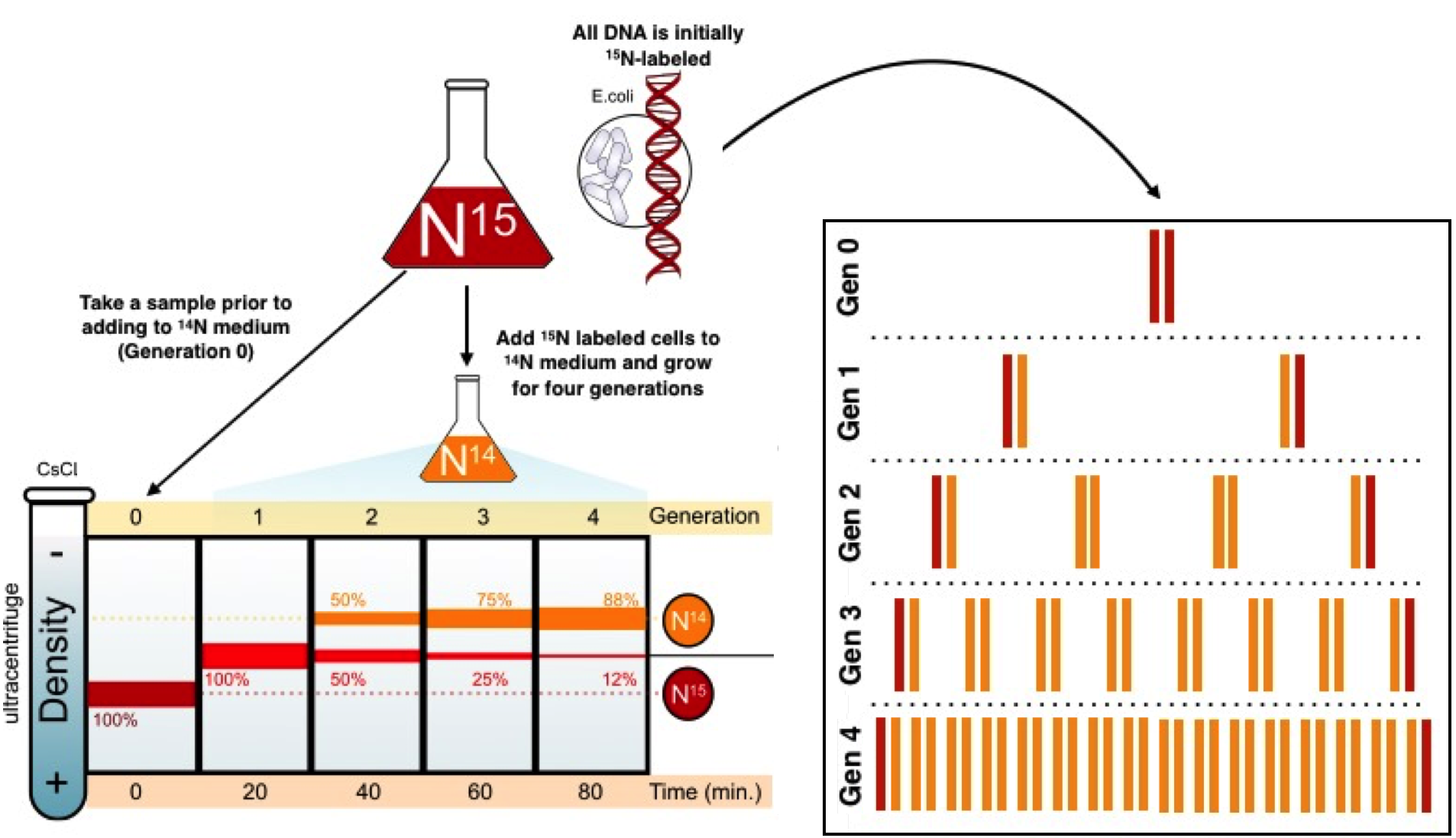
Mode Of Dna Replication Meselson Stahl Experiment Article Khan Academy
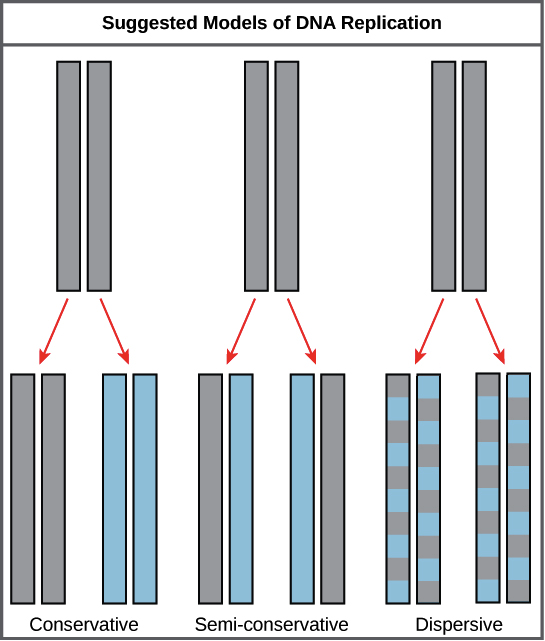
Mode Of Dna Replication Meselson Stahl Experiment Article Khan Academy
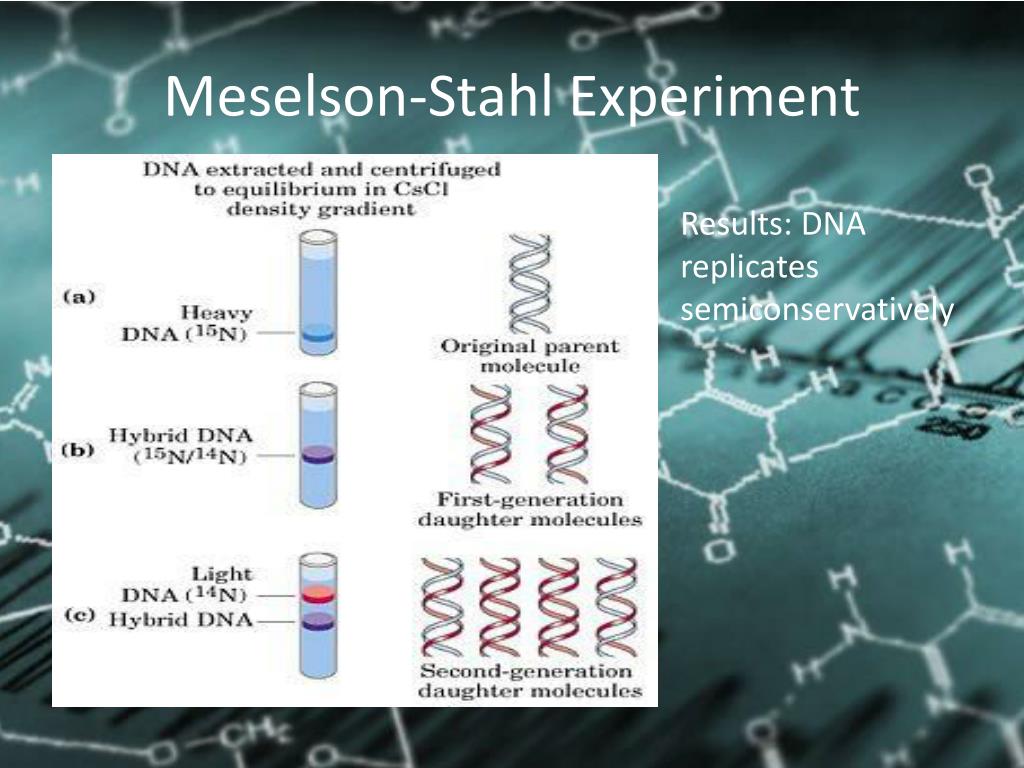
Ppt Meselson Stahl Experiment Powerpoint Presentation Free Download Id 3100001

Dna Replication Meselson And Stahl Experiment
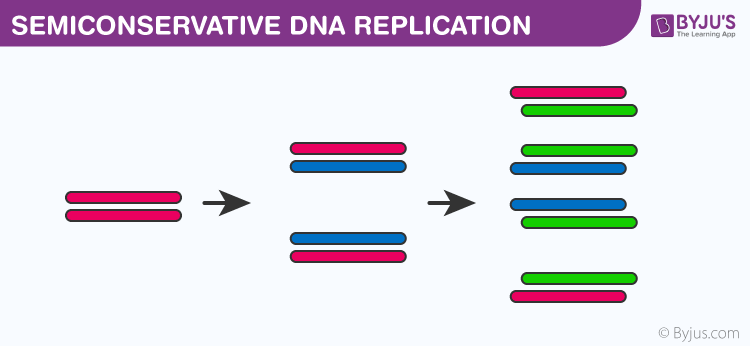
The Meselson And Stahl Experiment On Dna Replication

State The Aim And Describe Messelson And Stahl S Experiment

Mcq Biology Learning Biology Through Mcqs Dna Sequence Biology Genome Project
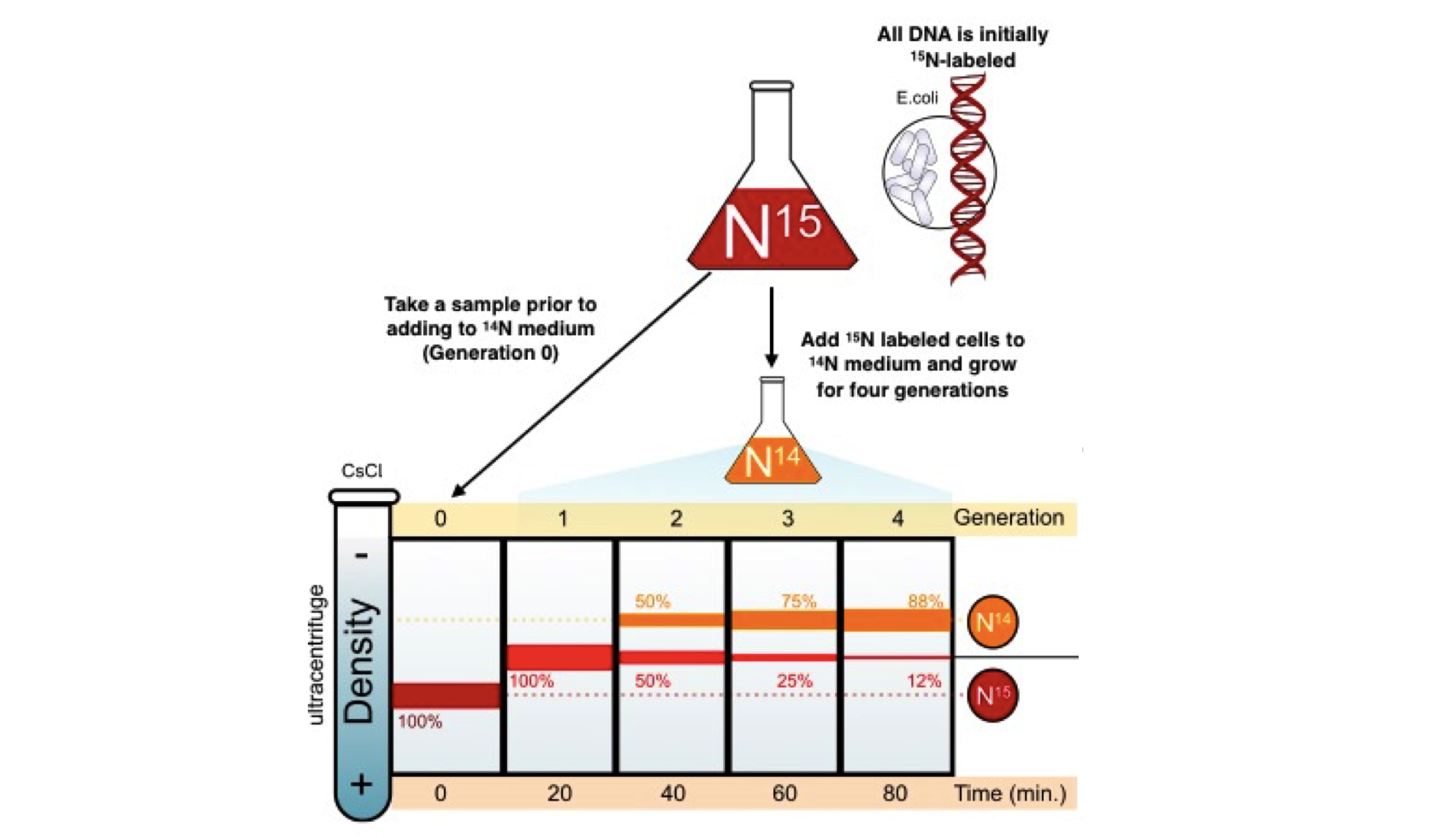
Mode Of Dna Replication Meselson Stahl Experiment Article Khan Academy

Meselson And Stahl Experiment Animation Youtube
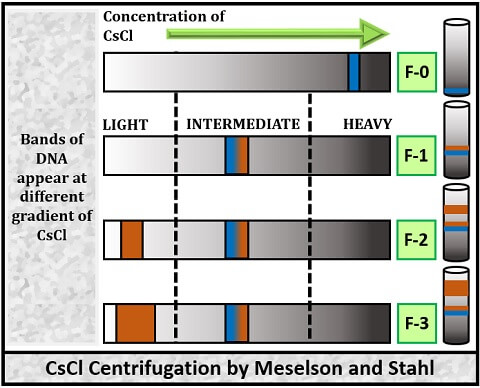
Meselson And Stahl Experiment Definition Steps Conclusion Biology Reader

